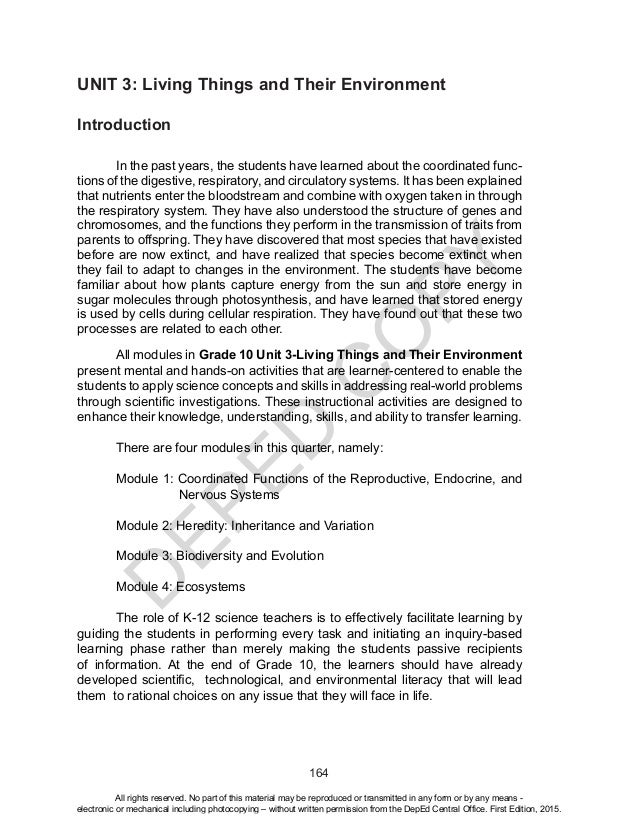Physical Science Module 10 Study Guide Answers
Water fills the grooves in the road, reducing how close the tire molecules can get to the road molecules. (Remember, friction is caused by molecules on each surface attracting one another, and the strength of the attraction depends on how close they can get to each other.
When the road gets wet, the grooves in the road get filled with water. This makes it harder for the bumps on the tires to fit into them, which makes it hard for the molecules to get close to one another. This can become an even bigger problem when a film of water gets trapped under the tires, causing the tires to lose contact with the road. Essentially, they are travelling on the water, not the road. This situation is called 'hydroplaning,' and it causes the tire molecules to be so far from the road molecules that very little friction exists.).
10 Newtons to the east, (Since the object is moving with a constant velocity, we know its acceleration is zero. Since the total force exerted on an object is equal to the object's mass times its acceleration (Newton's Second Law), then the total force on the object is zero as well. This means that the child exerts enough force to counteract kinetic friction, but no more. We must be talking about kinetic friction, because the toy is already moving. Thus, the child exerts a force of 10 Newtons to the east.). Since it takes more than 25 Newtons to get the object moving, the static frictional force is 25 Newtons east.

Once it is moving, however, it accelerates at 0.1 meters per second2. This means the total force on the object is: Total force = (mass) x (acceleration) Total force = (15 kg) x (0.10 meters per sec2) = 1.5 Newtons This force is the combination of the applied force (20 Newtons) and the kinetic frictional force (we know to use the kinetic frictional force because it is moving). Since the kinetic frictional force opposes motion, it is opposite of the applied force.
Thus, the total force is the applied force minus the frictional force. 20 Newtons - kinetic frictional force = 1.5 Newtons Thus, in order for the total force to be 1.5 Newtons, the kinetic frictional force must be 18.5 Newtons east. If the static frictional force is 700 Newtons, the worker must apply more than 700 Newtons of force to get the box moving. To accelerate the box once it is moving, the total force must be: Total force = (mass) x (acceleration) Total force = (500 kg) x (0.10 meters per sec2) = 50 Newtons This total force is made up of the worker's force minus the kinetic frictional force.
We were told the kinetic frictional force is 220 Newtons, so we can say: Worker's force - 220 Newtons = 50 Newtons The worker's force, then, must be 270 Newtons south. Static friction keeps objects from moving. If the gardener had to exert slightly more than 100 Newtons of force to get the rock moving, the static frictional force is 100 Newtons.
Once it got moving, the gardener keeps it moving at a constant velocity eastward. This tells us that the acceleration is zero, which means the total force on the rock is zero. Thus, the gardener applies enough force to overcome the kinetic frictional force, but no more. The kinetic frictional force,then, must be 45 Newtons to the west. The total force on the rock can be calculated from the mass and acceleration: Total force = (mass) x (acceleration) Total force = (710 kg) x (0.20 meters per sec2) = 142 Newtons Now what is this force made of?
Well, one man is pushing east with 156 Newtons, and the other is pushing east with 220 Newtons. Since those forces are in the same direction, they add.
Friction is there as well, however, and it opposes the motion. Thus, it subtracts. 156 Newtons + 220 Newtons - kinetic frictional force = 142 Newtons When we add 156 and 220, we get 376.
• Automatic Oil Drain: A display reminds you to empty the graduated container to show the amount of oil to replace. • Vacuum Leak Test: Monitors level after evacuation, informs of possible leak. • Oil Inject: Less than 1% cross-contamination. • Optional Refrigerant & Oil Database: Includes A/C Charge and Oil Capacities for North American market vehicles. Robinair 34788 user manual.

Apologia Physical Science Module 10 Test Answers
376 - kinetic frictional force = 142 Newtons So, the kinetic frictional force is equal to whatever number leaves 142 when subtracted from 376. Thus, the kinetic frictional force must be 234 Newtons west.